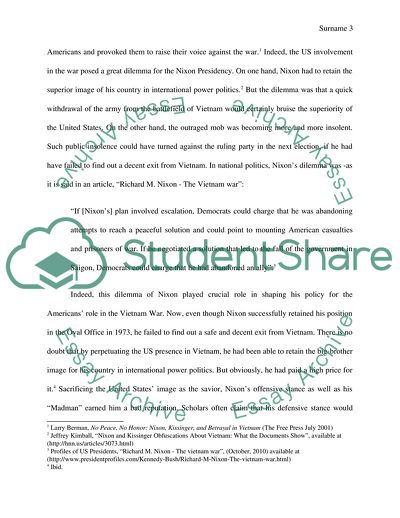Cite this document
(President Richard Nixons Role in the Vietnam War Essay Example | Topics and Well Written Essays - 2000 words - 3, n.d.)
President Richard Nixons Role in the Vietnam War Essay Example | Topics and Well Written Essays - 2000 words - 3. https://studentshare.org/history/1797152-american-history
President Richard Nixons Role in the Vietnam War Essay Example | Topics and Well Written Essays - 2000 words - 3. https://studentshare.org/history/1797152-american-history
(President Richard Nixons Role in the Vietnam War Essay Example | Topics and Well Written Essays - 2000 Words - 3)
President Richard Nixons Role in the Vietnam War Essay Example | Topics and Well Written Essays - 2000 Words - 3. https://studentshare.org/history/1797152-american-history.
President Richard Nixons Role in the Vietnam War Essay Example | Topics and Well Written Essays - 2000 Words - 3. https://studentshare.org/history/1797152-american-history.
“President Richard Nixons Role in the Vietnam War Essay Example | Topics and Well Written Essays - 2000 Words - 3”. https://studentshare.org/history/1797152-american-history.


